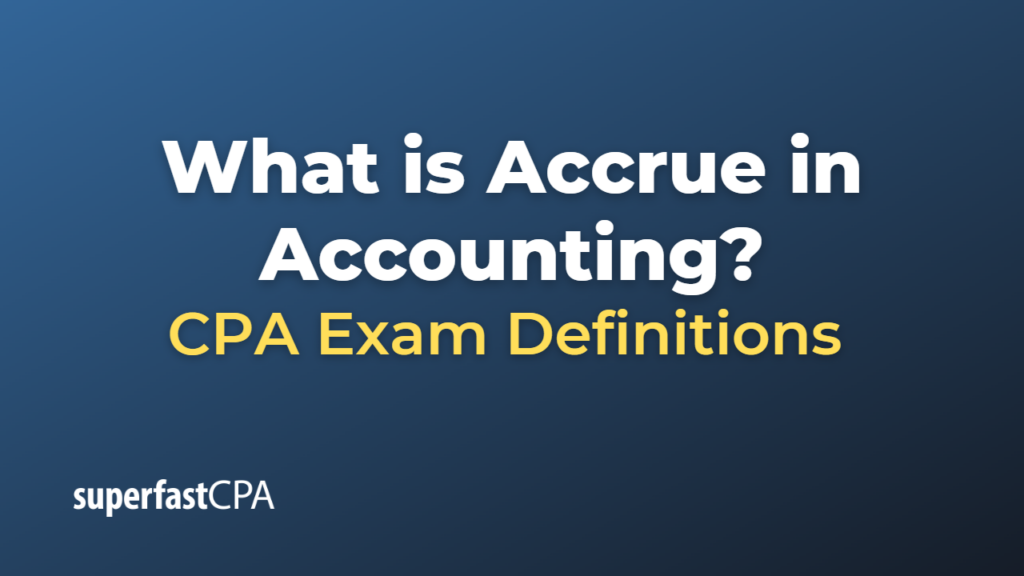Accrue
To “accrue” in accounting means to record financial transactions, such as revenues and expenses, as they are earned or incurred, regardless of when the related cash is received or paid. This process is based on the accrual accounting method, which aims to provide a more accurate representation of a company’s financial performance by recognizing economic events in the financial statements when they occur, rather than when cash is exchanged.
Accruals are important for adhering to the matching principle, which states that revenues and expenses should be recognized in the same accounting period in which they are earned or incurred. This allows for a better understanding of a company’s financial health and helps in making informed decisions for business management and investors.
In accrual accounting, transactions are recorded as follows:
- Revenues: Recognized when they are earned, not when the cash is received. For example, a company provides services to a customer in December but doesn’t receive payment until January. Under the accrual accounting method, the revenue would be recorded in December, when the service was provided.
- Expenses: Recognized when they are incurred, not when the cash is paid. For example, a company receives utility services in December but doesn’t pay the utility bill until January. Under the accrual accounting method, the expense would be recorded in December, when the utility services were used.
Accruing transactions in this manner ensures that the financial statements provide a more accurate and consistent representation of a company’s financial position and performance across accounting periods.
Example of Accrue
Let’s consider a hypothetical example to illustrate how accruals work in accounting.
Imagine a company called “City Web Design” that provides website design services. The company follows the accrual basis of accounting. In November, City Web Design completed a website project for a client and sent an invoice for $5,000. However, the client will not pay the invoice until December.
In the same period, City Web Design received internet services worth $500 for the month of November, but the payment for the service is due in December.
Here’s how the transactions would be recorded under accrual accounting:
- Revenues: City Web Design completed the website project in November, so the revenue should be recognized in November, even though the payment will be received in December. The journal entry in November would be:Debit: Accounts Receivable – $5,000 Credit: Service Revenue – $5,000This entry records the earned revenue and increases the Accounts Receivable account, indicating that the company expects to collect the payment in the future.
- Expenses: City Web Design received internet services in November, so the expense should be recognized in November, even though the payment will be made in December. The journal entry in November would be:Debit: Internet Expense – $500 Credit: Accounts Payable – $500This entry records the incurred expense and increases the Accounts Payable account, indicating that the company has an obligation to pay for the internet services in the future.
By accruing transactions in this manner, City Web Design ensures that its financial statements accurately reflect the company’s financial performance for the accounting period, providing a more accurate representation of its financial position and facilitating informed decision-making for business management and investors.













